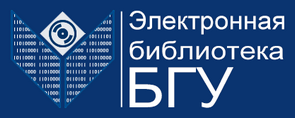Пожалуйста, используйте этот идентификатор, чтобы цитировать или ссылаться на этот документ:
https://elib.bsu.by/handle/123456789/264746| Заглавие документа: | Search for long-lived neutral particles decaying to quark-antiquark pairs in proton-proton collisions at s =8TeV |
| Авторы: | Mossolov, V. Shumeiko, N. Gonzalez, Suarez J. CMS Collaboration |
| Тема: | ЭБ БГУ::ЕСТЕСТВЕННЫЕ И ТОЧНЫЕ НАУКИ::Физика |
| Дата публикации: | 2015 |
| Издатель: | American Physical Society |
| Библиографическое описание источника: | Phys Rev D Part Fields Gravit Cosmol 2015;91(1). |
| Аннотация: | A search is performed for long-lived massive neutral particles decaying to quark-antiquark pairs. The experimental signature is a distinctive topology of a pair of jets, originating at a secondary vertex. Events were collected with the CMS detector at the CERN LHC in proton-proton collisions at a center-of-mass energy of 8 TeV. The data analyzed correspond to an integrated luminosity of 18.5fb-1. No significant excess is observed above standard model expectations. Upper limits at 95% confidence level are set on the production cross section of a heavy neutral scalar particle, H, in the mass range of 200 to 1000 GeV, decaying promptly into a pair of long-lived neutral X particles in the mass range of 50 to 350 GeV, each in turn decaying into a quark-antiquark pair. For X with mean proper decay lengths of 0.4 to 200 cm, the upper limits are typically 0.5-200fb. The results are also interpreted in the context of an R-parity-violating supersymmetric model with long-lived neutralinos decaying into a quark-antiquark pair and a muon. For pair production of squarks that promptly decay to neutralinos with mean proper decay lengths of 2-40cm, the upper limits on the cross section are typically 0.5-3fb. The above limits are the most stringent on these channels to date. |
| URI документа: | https://elib.bsu.by/handle/123456789/264746 |
| DOI документа: | 10.1103/PhysRevD.91.012007 |
| Scopus идентификатор документа: | 84921459273 |
| Финансовая поддержка: | We congratulate our colleagues in the CERN accelerator departments for the excellent performance of the LHC and thank the technical and administrative staffs at CERN and at other CMS institutes for their contributions to the success of the CMS effort. In addition, we gratefully acknowledge the computing centers and personnel of the Worldwide LHC Computing Grid for delivering so effectively the computing infrastructure essential to our analyses. Finally, we acknowledge the enduring support for the construction and operation of the LHC and the CMS detector provided by the following funding agencies: BMWFW and FWF (Austria); FNRS and FWO (Belgium); CNPq, CAPES, FAPERJ, and FAPESP (Brazil); MES (Bulgaria); CERN; CAS, MoST, and NSFC (China); COLCIENCIAS (Colombia); MSES and CSF (Croatia); RPF (Cyprus); MoER, ERC IUT and ERDF (Estonia); Academy of Finland, MEC, and HIP (Finland); CEA and CNRS/ IN2P3 (France); BMBF, DFG, and HGF (Germany); GSRT (Greece); OTKA and NIH (Hungary); DAE and DST (India); IPM (Iran); SFI (Ireland); INFN (Italy); MSIP and NRF (Republic of Korea); LAS (Lithuania); MOE and UM (Malaysia); CINVESTAV, CONACYT, SEP, and UASLP-FAI (Mexico); MBIE (New Zealand); PAEC (Pakistan); MSHE and NSC (Poland); FCT (Portugal); JINR (Dubna); MON, RosAtom, RAS and RFBR (Russia); MESTD (Serbia); SEIDI and CPAN (Spain); Swiss Funding Agencies (Switzerland); MST (Taipei); ThEPCenter, IPST, STAR and NSTDA (Thailand); TUBITAK and TAEK (Turkey); NASU and SFFR (Ukraine); STFC (United Kingdom); DOE and NSF (USA). Individuals have received support from the MarieCurie program and the European Research Council and EPLANET (European Union); the Leventis Foundation; the A. P. Sloan Foundation; the Alexander von Humboldt Foundation; the Belgian Federal Science Policy Office; the Fonds pour la Formation à la Recherche dans l’Industrie et dans l’Agriculture (FRIA-Belgium); the Agentschap voor Innovatie door Wetenschap en Technologie (IWT-Belgium); the Ministry of Education, Youth and Sports (MEYS) of the Czech Republic; the Council of Science and Industrial Research, India; the HOMING PLUS program of Foundation for Polish Science, cofinanced from European Union, Regional Development Fund; the Compagnia di San Paolo (Torino); the Consorzio per la Fisica (Trieste); MIUR project 20108T4XTM (Italy); the Thalis and Aristeia programs cofinanced by EU-ESF and the Greek NSRF; and the National Priorities Research Program by Qatar National Research Fund. |
| Располагается в коллекциях: | Статьи НИУ «Институт ядерных проблем» |
Все документы в Электронной библиотеке защищены авторским правом, все права сохранены.

